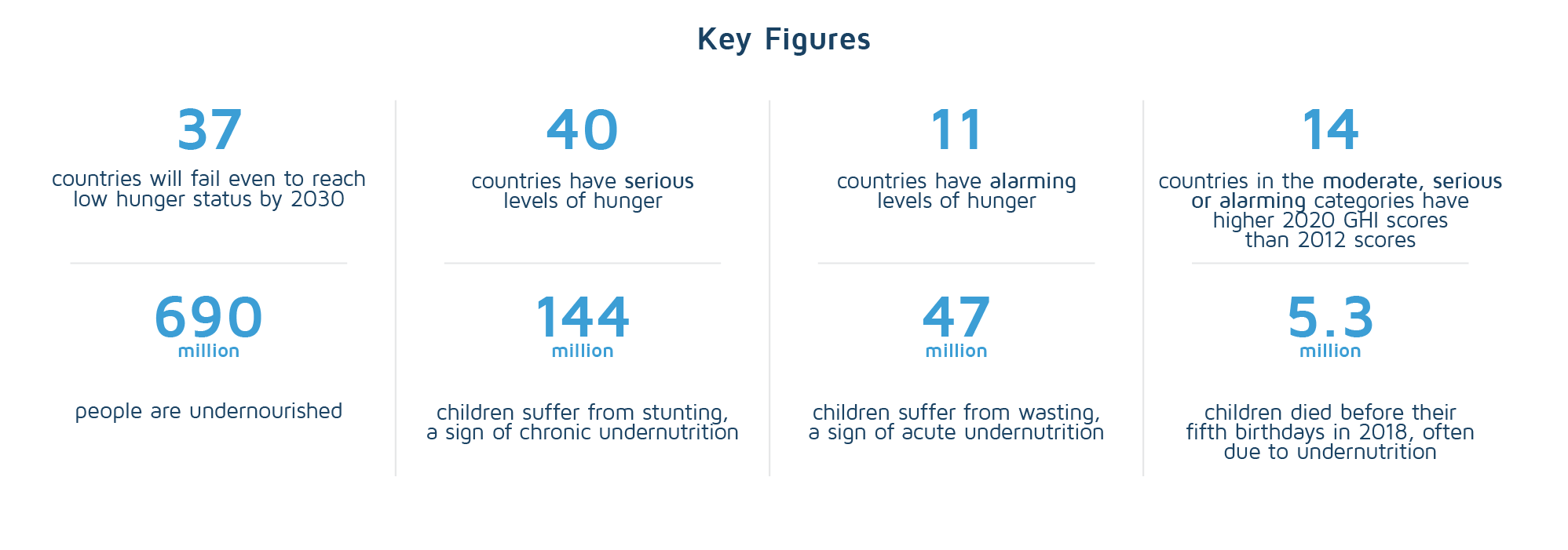This is the conclusion reached following an investigation conducted by a group of researchers from backed by the German government.
According to the authors of the research project Ceres2030: Sustainable Solutions to End Hunger, this amount would be sufficient to defeat hunger, providing the money is spent effectively and is invested in innovation, technology, and education, not simply to cover the basic needs of the poorest countries such as food and water.
The conclusions were reached based on data from 23 different countries. The researchers estimated that donors would have to contribute an additional US$14bn of funding annually over the next 10 years to provide underdeveloped countries with food which is twice as much as they currently allocate. However, this would not be enough to meet every need in respect of combating global hunger. Low- and middle-income countries will also have to contribute to this effort with the researchers assessing that they would have to be prepared to contribute about US$19bn a year which they could achieve by introducing appropriate taxation policies.
These goals seem to be very ambitious especially bearing in mind that, according to the latest Global Hunger Index, 11 countries have alarming levels of hunger, (i.e., Chad, Timor-Leste, Madagascar, Burundi, Central African Republic, Comoros, Democratic Republic of Congo, Somalia, Syria, South Sudan, and Yemen) and 690 million people around the world are undernourished with almost 200 million children suffering from chronic undernutrition and 40 countries facing serious levels of hunger.

The authors of the study estimated how much the world would need to curb hunger using an economic model and data on how development aid is currently being spent. They reached the conclusion that improvement is required in 14 areas including social protection, income support, and investment in research. They also recommended that the development of agricultural techniques is subsidized as this could significantly improve harvest efficiency and thus help to curb hunger. By reducing the losses from harvests, it would be possible to secure more nutritious food for poor populations. According to the researchers, it is important to support women farmers in particular as well as implementing disruptive technologies such as Artificial Intelligence to deal with food insecurity.
They also emphasized that the most important factor is not how much is spent, but how effectively the money is allocated. This is why developed countries should not only increase their development aid budgets but also help poor countries to learn how to spend this money in the most effective way by providing training and know-how. Without sufficient knowledge about how to invest this money in many key areas such as education, innovation, trade facilitation, technology, and agriculture, it will not be possible to defeat hunger by 2030.
Unfortunately, the Global Hunger Index indicates that the world is not on track to reach this goal by 2030. Since 2000, the number of people affected by famine had been gradually decreasing but the COVID-19 pandemic, together with the climate crisis, has now significantly worsened the situation.
The research was conducted by experts from the Centre for Development Research, Cornell University, the UN Food and Agricultural Organization (FAO), the International Food Policy Research Institute, and the International Institute for Sustainable Development.

